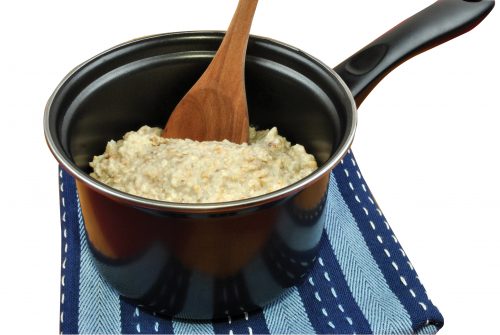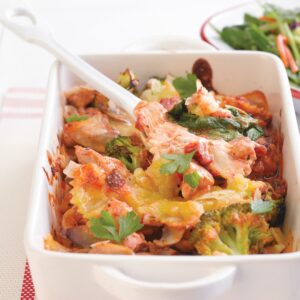
To be on top form each day, and to face wild winter weather, a warming porridge is just what’s called for.
What’s available
A Scottish influence on our eating habits is no more apparent that in the selection of hot breakfast cereals; almost all being some form of oats. There’s a texture to suit all preferences: wholegrain oats are larger, and as long as you don’t overcook them they’ll produce a firmer, nuttier texture. There are also oats flavoured with spices or added fruit, and there are single-serve sachets to pop in your bag. The smaller the oats are cut, the quicker they cook: it’s likely they are also digested more quickly, so you may find the larger oats help you feel full for longer.
Fibre in oats
There’s little difference nutritionally between the plain oats: while instant or quick-cook oats are processed slightly differently, nothing is removed. Oats are a source of both soluble and insoluble fibre. Insoluble fibre passes through the gut pretty much intact helping promote regular bowel movements. Beta-glucan found in oats is a soluble fibre which can help lower absorption of LDL-cholesterol. Studies have shown that eating around two thirds of a cup of oats each day can lower cholesterol in people with risk factors for cardiovascular disease in as little as four weeks. For breakfast cereals we aim for 5g or more fibre per 100g, (between 5-15g per 100g for children) and that’s easily achieved with oat-based cereals. With added fruit as well as oatmeal, Hubbard’s Traditional Fruitful Porridge is higher in fibre than plain oats.
Sugar
Flavoured oats can have fruit, sugar, skimmed milk powder and flavours added: it pays to read the ingredients list. While the fruit and skimmed milk powder will naturally add to the amount of sugar, it’s the added sugars (which includes white, brown or raw sugar as well as sweeteners such as honey, maple or golden syrup) that can make the total amount of sugar very high. As a guide 4g of sugar equals one teaspoon of white sugar, so if you see 12g sugars per serve that’s equivalent to three teaspoons of white sugar. While you might add a teaspoon of sugar to your porridge, three times that amount is not ideal.
For products without added fruit we recommend choosing those with 15g or less sugar per 100g, and if they contain fruit, 25g sugar or less per 100g.
Salt
Although we always recommend limiting salt and not adding it unnecessarily, a tiny pinch of salt will bring out the flavour in oats. It may surprise you to know how little salt you need to do this.
When choosing products with salt already added, aim for 400mg or less sodium per 100g.
Saturated fat
When choosing breakfast cereals, we recommend those with 3g or less saturated fat per 100g. We didn’t see any oat products high in saturated fat.
Beyond oats
While oats are a nutritious food not everyone is a fan and for some they’re just not an option. In the past it was thought a small amount of oats could be tolerated by those with coeliac disease, however more recently it’s been found that oats are toxic to some people with coeliac disease, so they need to be avoided. If oats are not for you, simply use other grains in the same way. We can make porridge with quinoa, millet, bulgar wheat, rice or a blend of different grains.
HFG tip
Add a bit of oomph to your porridge with one or several of these: cinnamon; ginger; sliced almonds or other chopped nuts; raisins; seeds such as sunflower, sesame or chia; and if you need some sweetness a little brown sugar, honey or maple syrup adds flavour as well.
www.healthyfood.com










